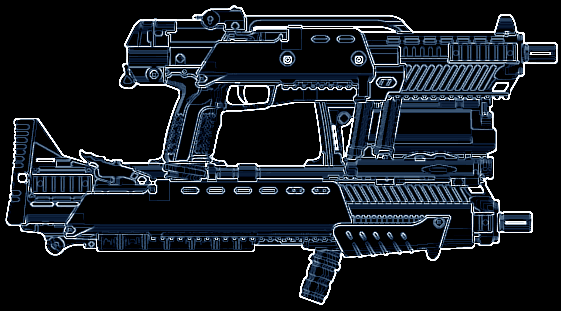QUOTE (Delphi @ Apr 9 2010, 05:55 PM) <{POST_SNAPBACK}>
Actually, there exists a form of teleporter within the Delphi universe. The "Riptide" system is designed for the limited instantaneous deployment of troops or supplies between ships. By utilizing a specialized faster-than-light carrier wave passed through the occupants within the riptide chamber, their particles are uniformly accelerated along a lateral vector, with a calculated beam falloff point placed at their destination. However, like any light-based wavelength, it can be scattered by the simplest refractor shielding, and is thus useless in a military engagement. It is useful however in performing rescue and salvage operations on a crippled ship that has lost the ability to open its outer doors. However, the energy requirements are massive, so even when used to this purpose, it's a slow and arduous process.
More painful then the mechanical requirements though is the strain placed on the passengers in the system. During riptide acceleration, every muscle in the body is paralyzed, simply because the neurological pathways are essentially frozen or at least slowed during transit. Despite this, a simple instantaneous jump between two places can feel like a trip as long as five to eight hours, depending on the distance traversed, as the human consciousness is still active during the entire relativistic jump. As a result, passengers often emerge at their destination fatigued and numb, and several hours older than when they first activated the Riptide.
Either way, escape pods exist on NDC cruisers, in the form of armored launch hardpoints similar to missile tubes. There are only a few escape centers on the ships, and most of them are usually demolished under enemy fire, but in cases of internal ship malfunction, such as a life support failure or a core breach, the crew can usually safely evacuate the vessel. In wartime, it's assumed that escape pods would be targeted and picked off anyway, so not much thought is put to ejecting in a combat zone.
Even ships in Star Trek have escape pods. You see them in use twice that I know of, both in the films. In First Contact , Picard orders the crew of the Enterprise -E to abandon ship after the Borg begin to try and take it over; Picard and the command crew initiate the self-destruct sequence. The film shows the crew launching escape pods from recesses on the ship's saucer section. In Star Trek (the one that came out in '09), Spock uses one to maroon Kirk on Delta Vega.
















